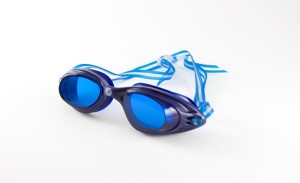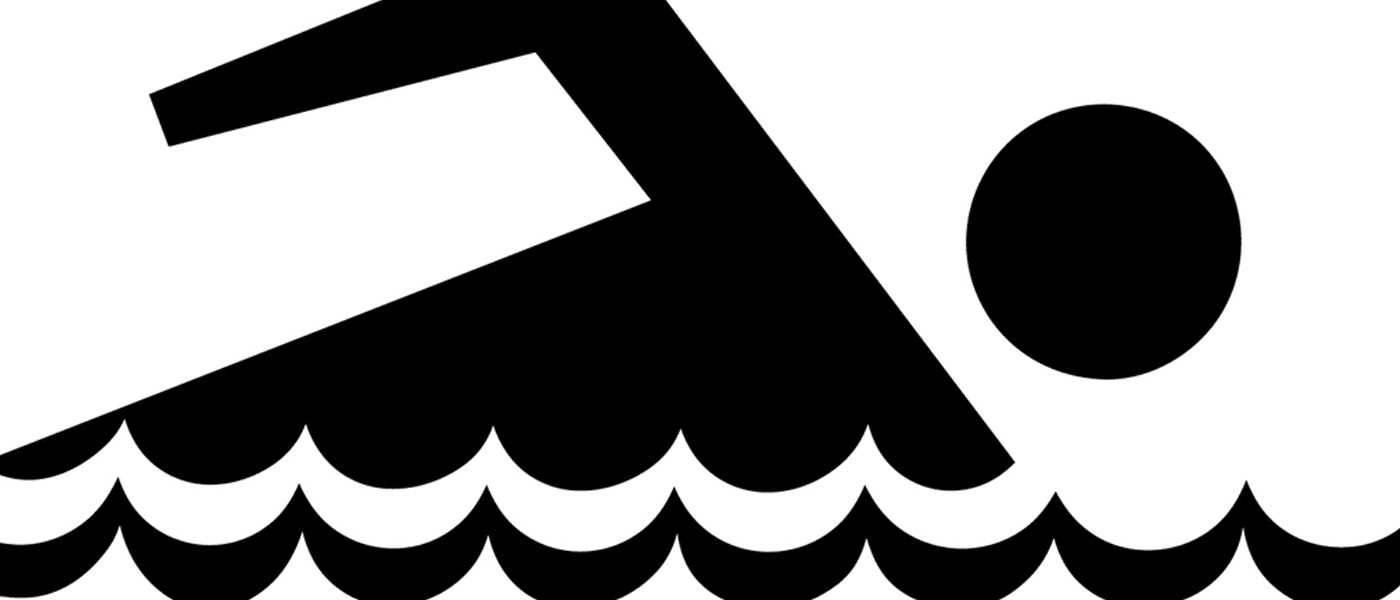Swimming is often the most daunting leg of a triathlon for athletes. For those who haven’t spent their lives in the water, learning later in life can be difficult. And even for those who have, triathlon swimming, both recreational and competitive, offer very different ball games.
Open-water swims in triathlons open up the water to all the swimmers in that race wave, without lanes to separate swimmers. While this type of swimming simply takes practice, there are other factors that also differentiate it, including conditions. Much competitive swimming takes place in regulated pools. However, tris are (mostly) outdoors, meaning swimmers are subjected to the elements. And while 60- or 70-degree water might sound nice, racers might be in for an unpleasant surprise: First, that temperature’s not that warm, and second, water temperatures in May, June and again late in the season might not be so refreshing (it’s more like torture).
 Swimmers training year-round will also need to buy a swimsuit, which is best done by trying on different brands and sizes for the right fit. Caps come in different types, notably latex (the thinnest material, also the most flimsy), silicone (thicker material) and nylon (fabric), and are generally picked on personal preference.
For about $200 a triathlete can get equipped with an appropriate wetsuit, goggles and cap; that’s not bad when compared to the budget necessary for bike equipment or that runners could easily spend $200 every few months on materials. Wetsuits last for a lifetime and while repairs are possible, they can be fixed either through home remedy kits or by bringing them back to the store. Wilson notes that tears are fixable, but people need to know what to use. (Some glues are flexible, others are not, leading to more tears.) If people are unsure, bring it to a professional to avoid damaging the suit more.
If you’re not aiming for triathlons, swimming is still a great low-impact way to achieve prime fitness. Area YMCAs, Gold’s Gyms and various public pools are available for people who want to give it a try. And for those looking to get outfitted at a local business, National Aquatic offers the aforementioned equipment, as well as scuba gear and classes. Call 479-5544 or visit nationalaquatic.com for details.
For more articles like Sink or Swim, CLICK HERE
Swimmers training year-round will also need to buy a swimsuit, which is best done by trying on different brands and sizes for the right fit. Caps come in different types, notably latex (the thinnest material, also the most flimsy), silicone (thicker material) and nylon (fabric), and are generally picked on personal preference.
For about $200 a triathlete can get equipped with an appropriate wetsuit, goggles and cap; that’s not bad when compared to the budget necessary for bike equipment or that runners could easily spend $200 every few months on materials. Wetsuits last for a lifetime and while repairs are possible, they can be fixed either through home remedy kits or by bringing them back to the store. Wilson notes that tears are fixable, but people need to know what to use. (Some glues are flexible, others are not, leading to more tears.) If people are unsure, bring it to a professional to avoid damaging the suit more.
If you’re not aiming for triathlons, swimming is still a great low-impact way to achieve prime fitness. Area YMCAs, Gold’s Gyms and various public pools are available for people who want to give it a try. And for those looking to get outfitted at a local business, National Aquatic offers the aforementioned equipment, as well as scuba gear and classes. Call 479-5544 or visit nationalaquatic.com for details.
For more articles like Sink or Swim, CLICK HERE
In comes the wetsuit, an essential piece of tri equipment, not so much because of buoyancy (although many will swear by that), but more because of warmth.
“Water sucks away body heat,” says Nick Wilson, service manager at National Aquatic, a locally owned and operated aquatics store at 1732 Erie Blvd. E. “Wetsuits help with buoyancy a little, but really it’s heat. If you’re spending your time losing it, you won’t have a good race.” Wilson also discourages buying a wetsuit online because getting the right fit is essential. “It’s a common misconception to buy a suit a size too big,” he says. “You want it as tight as physically possible because once water gets in a wetsuit, it stays in. Those bubbles in a suit mean it’s not making contact with the skin and you’re losing body heat to the water.” He encourages swimmers to visit the shop and try on suits, making sure they select the right one for their body and purpose. Wilson explains that scuba suits are much thicker, restricting body movement even more, while wetsuits utilize more flexible material. It’s also important that beginner wetsuit users realize that the restriction, although as flexible as possible, can be cause for distress and even damage if users don’t build up proper endurance, especially in the shoulders. Many starting users are encouraged to use sleeveless suits, which focus on keeping the core warm. National Aquatic has been in existence since 1959 and at its Erie Boulevard location since the early 1980s, yet Wilson notes that the wetsuit (and triathlon) explosion happened within the last few years. Brands such as NeoSport have become more popular, while other brands like Speedo, TYR and Nike have branched into the world of wetsuits and water triathlon training equipment. Still, like running and biking, Wilson encourages swimmers to buy the right equipment. “People should keep swimming all year,” he says. “They also need proper equipment for their height and weight to make sure they keep swimming a low-stress, low-impact sport. We want to help them have the most efficient workout.” Resistance equipment like flippers and paddles should be selected based on physical proportions, while other equipment, including caps and goggles, is often chosen more on preference. Wilson explains that certain goggles simply suction better to the face, making them especially desirable for triathletes who do not want to waste time fixing or fighting with water-filled goggles during mid-race.“People depend on tight straps for goggles,” he says. “But that’s wrong. The tighter the straps, the more they’ll leak. You want goggles with the best seal.”
Goggles should be able to stay firmly in place simply by suctioning them around the eyes, without strapping at all. It’s a good test when trying a new pair. Swimmers training year-round will also need to buy a swimsuit, which is best done by trying on different brands and sizes for the right fit. Caps come in different types, notably latex (the thinnest material, also the most flimsy), silicone (thicker material) and nylon (fabric), and are generally picked on personal preference.
For about $200 a triathlete can get equipped with an appropriate wetsuit, goggles and cap; that’s not bad when compared to the budget necessary for bike equipment or that runners could easily spend $200 every few months on materials. Wetsuits last for a lifetime and while repairs are possible, they can be fixed either through home remedy kits or by bringing them back to the store. Wilson notes that tears are fixable, but people need to know what to use. (Some glues are flexible, others are not, leading to more tears.) If people are unsure, bring it to a professional to avoid damaging the suit more.
If you’re not aiming for triathlons, swimming is still a great low-impact way to achieve prime fitness. Area YMCAs, Gold’s Gyms and various public pools are available for people who want to give it a try. And for those looking to get outfitted at a local business, National Aquatic offers the aforementioned equipment, as well as scuba gear and classes. Call 479-5544 or visit nationalaquatic.com for details.
For more articles like Sink or Swim, CLICK HERE
Swimmers training year-round will also need to buy a swimsuit, which is best done by trying on different brands and sizes for the right fit. Caps come in different types, notably latex (the thinnest material, also the most flimsy), silicone (thicker material) and nylon (fabric), and are generally picked on personal preference.
For about $200 a triathlete can get equipped with an appropriate wetsuit, goggles and cap; that’s not bad when compared to the budget necessary for bike equipment or that runners could easily spend $200 every few months on materials. Wetsuits last for a lifetime and while repairs are possible, they can be fixed either through home remedy kits or by bringing them back to the store. Wilson notes that tears are fixable, but people need to know what to use. (Some glues are flexible, others are not, leading to more tears.) If people are unsure, bring it to a professional to avoid damaging the suit more.
If you’re not aiming for triathlons, swimming is still a great low-impact way to achieve prime fitness. Area YMCAs, Gold’s Gyms and various public pools are available for people who want to give it a try. And for those looking to get outfitted at a local business, National Aquatic offers the aforementioned equipment, as well as scuba gear and classes. Call 479-5544 or visit nationalaquatic.com for details.
For more articles like Sink or Swim, CLICK HERE










